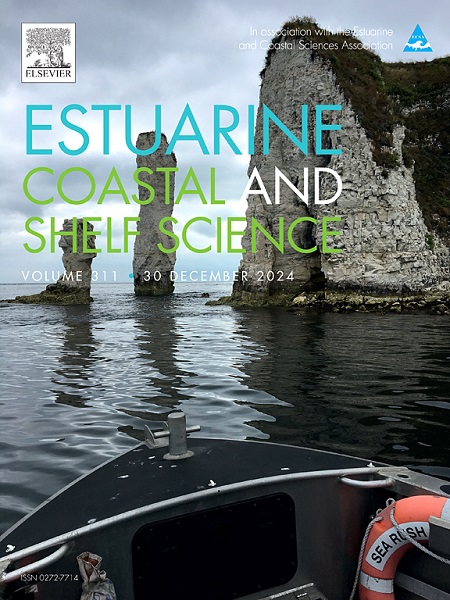Shifts in marsh erosion, migration, and wave exposure over nearly two centuries of sea-level rise in the Gulf of Mexico
IF 2.6
3区 地球科学
Q1 MARINE & FRESHWATER BIOLOGY
引用次数: 0
Abstract
Coastal wetlands are economically important ecosystems, but are at risk to erosion from waves, storms, and sea level rise. However, marshes can persist under rising sea level through vertical accretion and migration into adjacent higher-elevation habitats. We measured rates of marsh shoreline change and migration and compared the results for historical and modern periods in a largely undeveloped and marine-dominated estuary within the Mississippi-Alabama coast of the Northern Gulf of Mexico. Mean shoreline change rate for the modern (post-1957) period was higher than historical rates (pre-1957) at −1.55 ± 0.11 m yr−1 and -0.84 ± 0.07 m yr−1, respectively. Shoreline change rates were highest in regions where exposure to wind-driven waves increased due to barrier island migration and land loss. Marsh migration (modern 1.25 ± 0.37 m yr−1 and historical 1.01 ± 0.13 m yr−1) occurred at similar rates as shoreline erosion except for the highest erosive shorelines, leading to an overall 15% marsh loss. Upland-to-marsh conversion occurred in forested areas and may have been encouraged by changes in management practices. In the Grand Bay estuary, our data show that marsh migration is not occurring at sufficient rates to compensate for marsh loss, resulting in overall loss in marsh habitat. Overall, migration may allow marsh to persist under rising sea levels but can lead to an overall reduction in forested or freshwater habitats if steep slopes or other barriers prevent their migration.
求助全文
约1分钟内获得全文
求助全文
来源期刊
CiteScore
5.60
自引率
7.10%
发文量
374
审稿时长
9 months
期刊介绍:
Estuarine, Coastal and Shelf Science is an international multidisciplinary journal devoted to the analysis of saline water phenomena ranging from the outer edge of the continental shelf to the upper limits of the tidal zone. The journal provides a unique forum, unifying the multidisciplinary approaches to the study of the oceanography of estuaries, coastal zones, and continental shelf seas. It features original research papers, review papers and short communications treating such disciplines as zoology, botany, geology, sedimentology, physical oceanography.

 求助内容:
求助内容: 应助结果提醒方式:
应助结果提醒方式:


